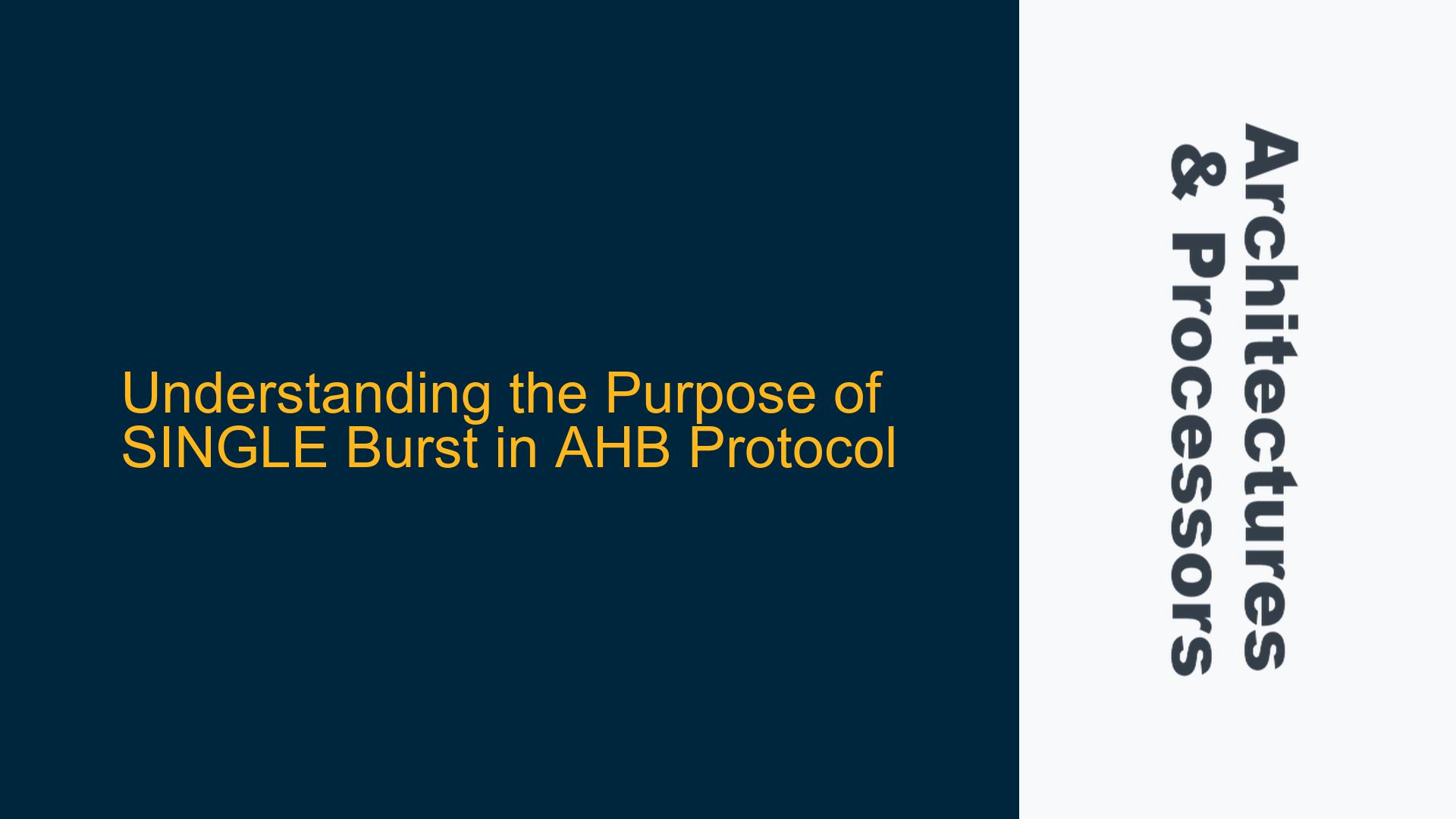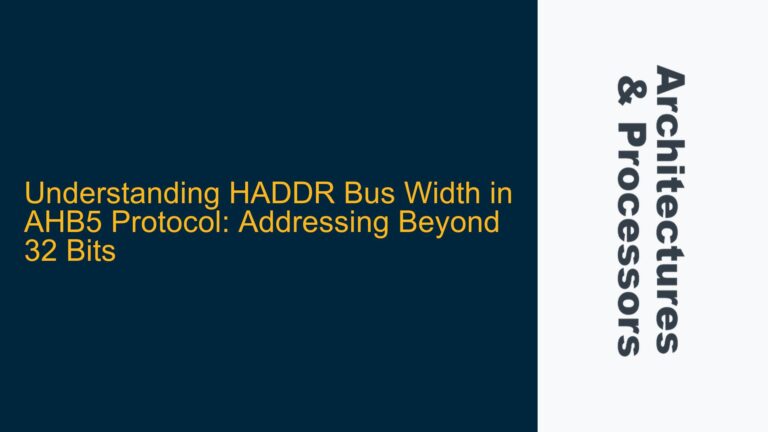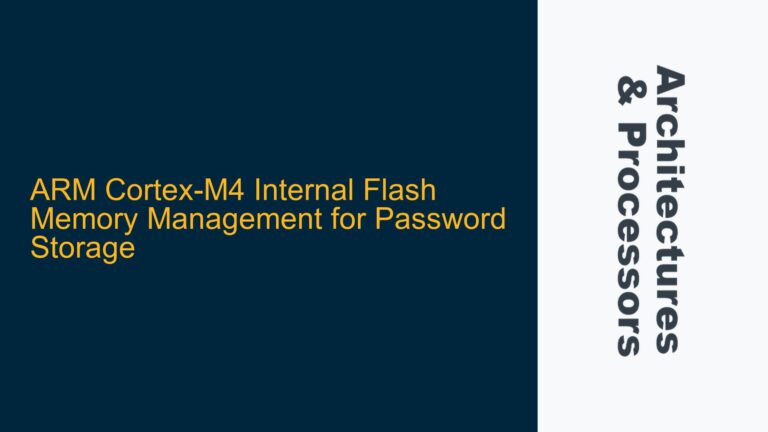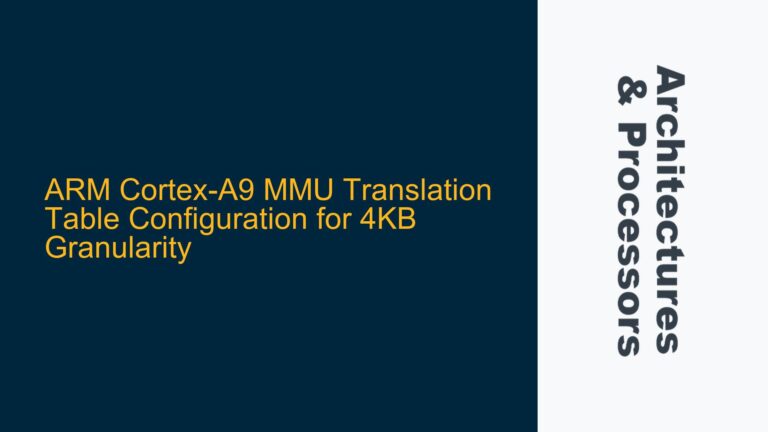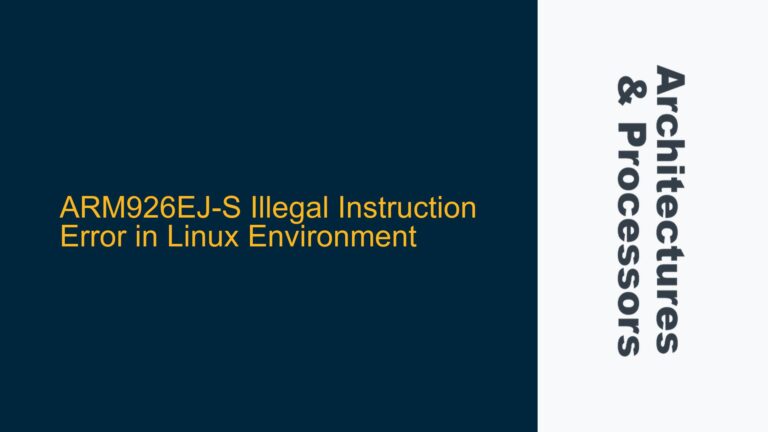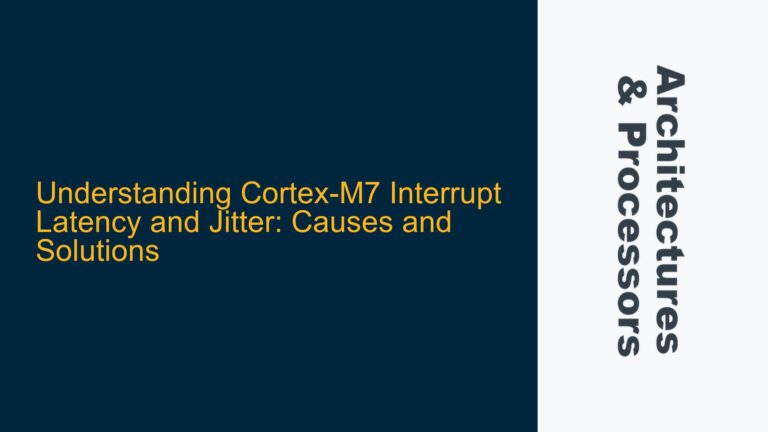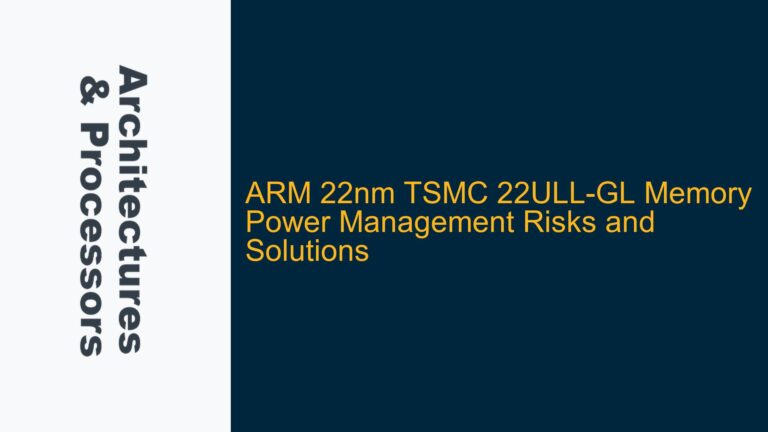ARM AHB SINGLE Burst vs. INCR Burst of Length One
The ARM Advanced High-performance Bus (AHB) protocol provides two mechanisms for performing single transfers: the SINGLE burst and the INCR (incremental) burst of length one. While both mechanisms achieve the same goal of transferring a single data unit, they serve different purposes in terms of system efficiency, slave behavior optimization, and design flexibility. The SINGLE burst explicitly indicates to the slave that only one transfer will occur, whereas an INCR burst of length one leaves the possibility of additional transfers ambiguous. This distinction is critical for optimizing slave behavior, such as prefetching, buffering, and resource allocation, which can significantly impact system performance and power consumption.
The SINGLE burst is particularly useful in scenarios where the master knows definitively that only one transfer is required. By using the SINGLE burst, the master communicates this information to the slave, enabling the slave to optimize its internal operations. For example, a slave might avoid unnecessary prefetching or buffering, which could otherwise lead to wasted cycles or increased power consumption. On the other hand, an INCR burst of length one does not provide this explicit information, leaving the slave to assume that additional transfers might follow. This ambiguity can result in suboptimal behavior, such as unnecessary prefetching or buffering, which could degrade system performance.
The choice between SINGLE and INCR bursts of length one also has implications for system design complexity. Simpler master designs might default to using INCR bursts for all transfers, including single transfers, as this approach requires less logic to manage burst types. However, more sophisticated master designs can leverage the SINGLE burst to improve system efficiency by providing explicit information about transfer requirements. This distinction highlights the importance of understanding the trade-offs between design complexity and system performance when implementing AHB-based systems.
Slave Optimization Opportunities with SINGLE Burst
The SINGLE burst feature in the AHB protocol enables slaves to optimize their behavior based on explicit information about transfer requirements. When a master uses a SINGLE burst, the slave knows definitively that only one transfer will occur, allowing it to tailor its internal operations accordingly. This optimization can manifest in several ways, including prefetching, buffering, and resource allocation.
For read operations, a slave might prefetch data in anticipation of future transfers when an INCR burst is used. However, if the master uses a SINGLE burst, the slave knows that no additional transfers will follow, eliminating the need for prefetching. This can reduce unnecessary memory accesses, saving both power and cycles. Similarly, for write operations, a slave might buffer multiple writes before committing them to memory when an INCR burst is used. If the master uses a SINGLE burst, the slave can commit the write immediately, reducing latency and avoiding the overhead of maintaining a write buffer.
Resource allocation is another area where the SINGLE burst can provide optimization opportunities. Slaves often allocate resources, such as buffers or internal state machines, based on the expected number of transfers. When a SINGLE burst is used, the slave can allocate the minimum required resources, freeing up additional resources for other operations. This can improve overall system efficiency, particularly in resource-constrained environments.
The ability to optimize slave behavior based on explicit transfer information is a key advantage of the SINGLE burst feature. By leveraging this feature, system designers can achieve significant performance and power savings, particularly in systems with complex slaves that perform advanced operations such as prefetching, buffering, and resource management.
Implementing SINGLE Burst in AHB-Based Systems
Implementing the SINGLE burst feature in AHB-based systems requires careful consideration of both master and slave design. For masters, the decision to use SINGLE bursts should be based on the ability to definitively determine when only one transfer is required. This might involve additional logic to analyze transfer requirements and select the appropriate burst type. For slaves, the implementation must include logic to interpret the SINGLE burst and optimize behavior accordingly.
In master designs, the use of SINGLE bursts can be integrated into the transfer logic by adding a state or signal that indicates when only one transfer is needed. This state or signal can then be used to set the HBURST signal to SINGLE during the address phase of the transfer. For example, a master might use a counter or finite state machine (FSM) to track the number of transfers required and set the HBURST signal accordingly. This approach requires additional logic but can provide significant performance and power benefits by enabling slave optimizations.
In slave designs, the implementation of SINGLE burst support involves adding logic to interpret the HBURST signal and adjust internal operations accordingly. This might include modifying prefetch logic to disable prefetching when a SINGLE burst is detected, or adjusting write buffering logic to commit writes immediately. Additionally, slaves might need to update resource allocation logic to allocate the minimum required resources when a SINGLE burst is used.
The following table summarizes the key considerations for implementing SINGLE burst support in AHB-based systems:
| Component | Implementation Considerations |
|---|---|
| Master | Add logic to determine when only one transfer is required. Set HBURST to SINGLE during the address phase. |
| Slave | Interpret HBURST signal to optimize prefetching, buffering, and resource allocation. Disable prefetching and commit writes immediately for SINGLE bursts. |
By carefully implementing SINGLE burst support in both masters and slaves, system designers can achieve significant performance and power savings. This requires a thorough understanding of the AHB protocol and the specific requirements of the system being designed. However, the benefits of optimized slave behavior and improved system efficiency make this effort worthwhile, particularly in complex systems with advanced slaves that perform operations such as prefetching, buffering, and resource management.
In conclusion, the SINGLE burst feature in the AHB protocol serves a critical role in optimizing system performance and power consumption by providing explicit information about transfer requirements. By leveraging this feature, system designers can enable slaves to optimize their behavior, reducing unnecessary operations and improving overall efficiency. Implementing SINGLE burst support requires careful consideration of both master and slave design, but the benefits of optimized system performance make this effort worthwhile. Understanding the trade-offs between SINGLE and INCR bursts of length one is essential for designing efficient AHB-based systems that meet the performance and power requirements of modern applications.
